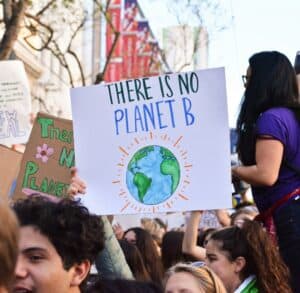The Lavin Agency Speakers Bureau
A speakers bureau that represents the best original thinkers,
writers, and doers for speaking engagements.
A speakers bureau that represents the best original thinkers,
writers, and doers for speaking engagements.
Innovation on demand? Creative leadership? NASA's moon landing got there first.
The moon landing didn’t just inspire a nation—it proved that, with the right leadership, we can solve complex problems and innovate quickly and under pressure. In his New York Times bestseller One Giant Leap, CHARLES FISHMAN explains how NASA rose to the impossible challenge set before them—inventing both space travel and modern project management. In talks, Fishman applies the revolutionary lessons of Apollo 11 to today’s urgent problems in business, education, and public life.
When JFK proposed the moon mission, NASA had no rockets, no computer that could navigate there, and certainly no spacesuits for the astronauts to wear. Yet eight years later, the American flag was firmly planted at Tranquility Base. The space race marked the most ambitious, most urgent, and most public project the world had ever seen. To get the job done not only required herculean effort, but bold leadership, creativity, discipline, and the teamwork of an entire country. In One Giant Leap, acclaimed New York Times bestselling author Charles Fishman explains how NASA managed 400,000 people over the course of eight years, without once losing sight of their goal—no matter how daunting it seemed.
Drawing from his years of original research, Fishman dives into the notion of “innovation on-demand:” Can we simply invent what we don’t know? And can we do it on a deadline? A budget? NASA narrowed in on the country’s shared—albeit, unprecedented—goal to create a culture of accountability, trust, autonomy, and community that fueled the project onward. Using the space agency’s unique management model as a blueprint, Fishman shows audiences that creativity does not have to be stifled by process, nor mired in bureaucracy. Intriguing, dramatic, and awe-inspiring, the moon landing undoubtedly makes for a great story, but it offers even more valuable lessons: how to unite in times of crises, how to think about human potential, and how to solve problems big and small. As the world once again faces large, complex, seemingly insurmountable challenges, we turn to mankind’s greatest achievement to guide us through.
Fishman—a three-time winner of the prestigious Gerald Loeb Award for Distinguished Business and Financial Journalism—is a renowned investigative and explanatory journalist, and no stranger to NASA. He spent six months covering the Challenger space shuttle disaster as a national reporter for The Washington Post, and has reported on space ever since, for The Atlantic, Fast Company, and Smithsonian. Fishman is also the author of The Wal-Mart Effect, the New York Times bestseller that was the first book to get inside Wal-Mart and explain how the world’s largest company really works. He is also the author of The Big Thirst: The Secret Life and Turbulent Future of Water, the bestselling book about water in a generation, chosen as a common read for a dozen schools and universities. Fishman is a contributor to The Atlantic, Fast Company, and Smithsonian, and is also the co-author of the #1 New York Times bestseller, A Curious Mind, about the power of curiosity, with Hollywood producer Brian Grazer.
We had an amazing session with Charles and our global leadership team. Our thinking is often too linear — learning about Apollo showed us how to frame our Unilever ‘moonshots.’ By reaching for the Moon, we ultimately fast-tracked our own digital revolution.
Unilever HomeCare WorldwideWe have had the pleasure of having Charles Fishman speak at two different events over the past 8 years. He was so popular with 'The Big Thirst,' we just had to bring him back. The Apollo moon landing story was the perfect way to start the last day of the conference, delivered in a riveting, enthusiastic and fun manner that earned the talk one of the highest rated keynotes we have had in 18 years. Thank you Charles!
Environmental Services Association of AlbertaCharles was a rock star. The executive committee enjoyed breakfast with him, and his talk went over very well. The Q&A could have gone on for way longer! He also did a book signing with a local bookseller. All in all, a great keynote, and an even better guy. Super nice, pleasant and fun to be with. He was very complimentary of our group but he may say nice things to all the kids!
IBTTACharles’ lecture was a tremendous success, I have received numerous comments from our patrons on how informative and engaging his lecture was. They particularly appreciated his ability and efforts to connect his lecture to Saratoga Springs and the time and research he did to help make it more relatable to them. He was wonderful to work with and we were so pleased to have him in Saratoga!
Saratoga Performing Arts Center
Author of Jerks at Work and Job Therapy NYU Professor of Psychology

Author of Indivisible: How to Forge Our Differences into a Stronger Future Founder and CEO of WatchHerWork

Author of Cultures of Growth Indiana University Professor Founder and CEO, Equity Accelerator

Author of Grit, the #1 New York Times Bestseller | Pioneering Researcher on Grit, Perseverance, and the Science of Success

Pulitzer Prize-Winning Creator of The 1619 Project | Executive Producer of the Emmy Award-Winning 1619 Project Hulu Docuseries | MacArthur Genius
Nike's Former Chief Marketing Officer | Author of Emotion by Design

New York Times Bestselling Author Of All Boys Aren’t Blue and We Are Not Broken | Emmy Nominee | LGBTQIA+ Activist
CEO of The Atlantic | Former Editor-in-Chief of WIRED

